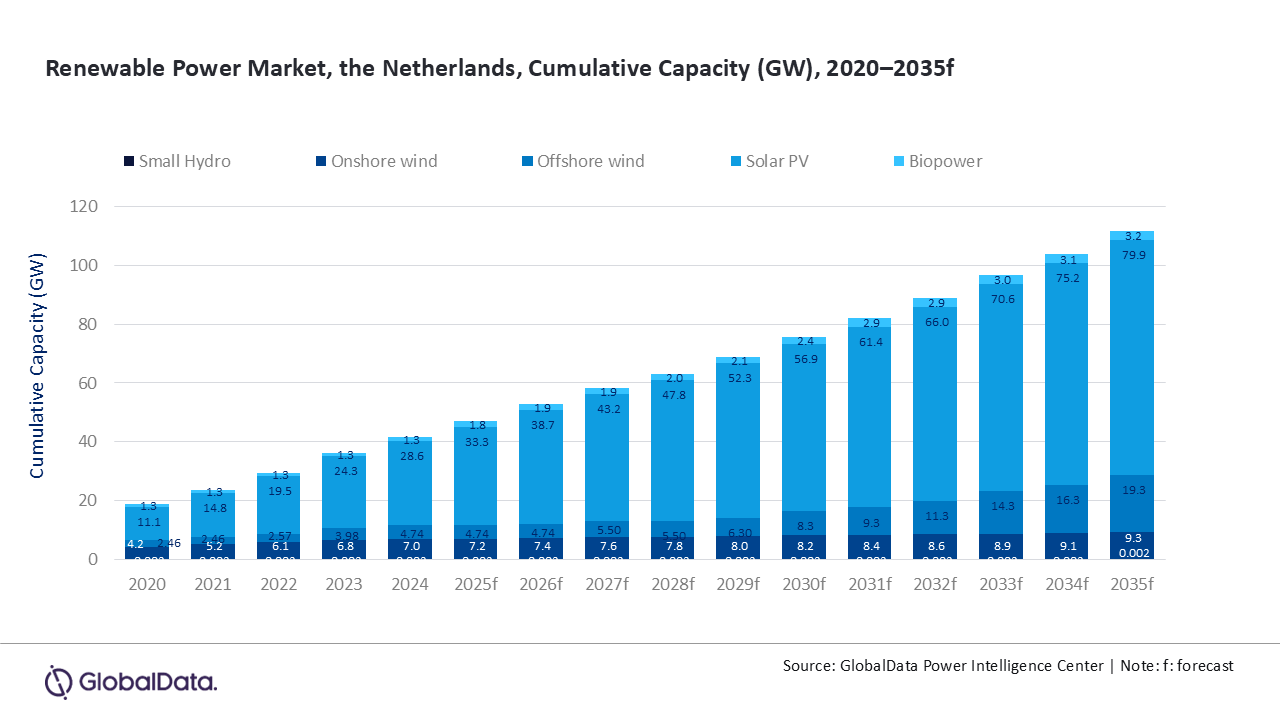The Netherlands is accelerating its clean energy transition with rapid growth in solar PV and wind, backed by EU-aligned policy and grid upgrades. Against this backdrop, the country’s cumulative renewable power capacity is forecast to reach 111.7GW by 2035, up from 41.6GW in 2024, registering a compound annual growth rate (CAGR) of 9.4% during 2024–35, according to GlobalData, the data and analytics company.
GlobalData’s report, Netherlands Power Market Trends and Analysis by Capacity, Generation, Transmission, Distribution, Regulations, Key Players and Forecast to 2035, shows that solar PV and onshore wind will be the principal growth engines of renewable power in the Netherlands. Solar PV capacity is projected to rise from 28.6GW in 2024 to 79.9GW in 2035, while onshore wind is expected to expand from 7.0GW to 9.3GW. Offshore wind will increase from 4.7GW to 19.3GW on the back of the Offshore Wind Roadmap, and biopower will grow from 1.3GW to 3.2GW over the same period.

Mohammed Ziauddin, Power Analyst at GlobalData, comments: “Supportive instruments such as SDE++, the Offshore Wind Roadmap 2030–2050, and the National Energy and Climate Plan are catalyzing renewables growth in the country, while TenneT’s large-scale grid reinforcement program and the National Grid Congestion Action Programme are addressing bottlenecks in connecting new capacity. The government’s hydrogen strategy targeting 3–4GW of electrolysis by 2030 and emerging battery projects will further enhance system flexibility.”
On the conventional side, coal is being phased out, with capacity expected to fall to zero from 2028 ahead of the 2030 deadline. Natural gas remains the primary balancing resource at roughly 20GW through 2035 to support reliability as variable renewables grow. Nuclear capacity is steady at 0.4GW (Borssele) with life-extension under consideration and plans progressing for two new reactors as a longer-term low-carbon complement.
However, challenges persist, including grid congestion, curtailment risks, and rising network tariffs, alongside the need to accelerate storage deployment and spatial planning for new wind and solar projects.
Zia concludes: “With solar PV scaling rapidly, steady onshore wind additions, and a strong offshore wind pipeline, the Netherlands is expected to build a much larger renewable base by 2035. Continued grid modernization, flexibility investment, and streamlined permitting will be key to turning the current pipeline into operating capacity at pace.”
 Engineer News Network The ultimate online news and information resource for today’s engineer
Engineer News Network The ultimate online news and information resource for today’s engineer

